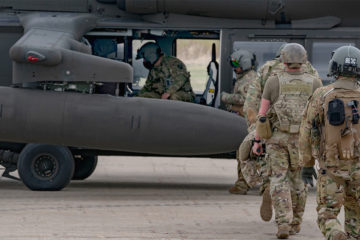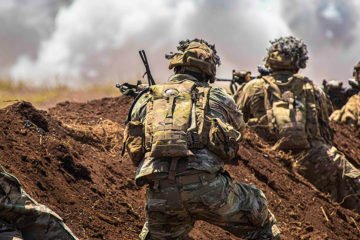Protecting Critical Infrastructure: How Holtec is Fortifying Security with Mobile Mesh Networking

Critical infrastructure and systems, such as power grids, water utilities, transportation networks, and communication systems, help keep our everyday life in motion. Unfortunately, because of their importance, they are often targeted by physical and cyberattacks by those looking to cause disruption, make a political statement, or sow chaos.
Recent political instability and global conflicts have led to an outbreak of cyberattacks against companies that deliver critical services and utilities. Water treatment facilities have been targeted by hacktivists, impacting the water supplies of towns in Arkansas, Indiana, and states across America.
But the threat isn’t limited to cyberattacks. Physical attacks against America’s critical infrastructure are still a concern, even if they are less frequent than cyberattacks. For example, in 2022, attackers targeted two electrical substations in North Carolina, plunging tens of thousands into the dark.
These attacks disrupted lives, businesses, and essential services, highlighting the urgent need for stronger physical security – as well as cybersecurity – at U.S. critical infrastructure facilities. But how can these locations be better fortified to protect America’s critical infrastructure and prevent future physical security threats?
Traditional voice radios, reliant on centralized towers, are vulnerable to limited range connectivity and disruptions from natural disasters or rugged terrain. Mesh networks create a self-healing, decentralized system where each device acts as a relay, keeping security personnel connected…
The best solution is for facility staff to train extensively using simulations designed to replicate real-world scenarios. This enables facilities to identify security vulnerabilities, establish areas where additional training or resources are needed, and harden these facilities against potential attacks.
These simulated training scenarios are the specialty of companies like Holtec Security International (HSI), which leverages its team of highly-trained former military personnel to conduct realistic simulated attacks to test and strengthen the defenses of secure facilities, ensuring they are prepared for any potential threat.
In recent simulation and training exercises, HSI has identified a seemingly universal vulnerability at many secure facilities – a lack of the effective, interoperable communications needed to present a collaborative, coordinated defense.
Holtec and the traditional comms challenge
In addition to conducting simulated training scenarios for security personnel, HSI also provides cybersecurity, network administration, technical support, and physical security services to communities, critical infrastructure, and secure facilities. The training scenarios are conducted by the HSI Composite Adversary Force (HSI-CAF), a highly-trained adversarial unit supporting their force-on-force exercises.
The HSI-CAF is fully equipped to simulate real-world threats and mirror the tactics of opposing forces during drills. In these simulated scenarios, they’ve found that the traditional voice radios used by security personnel can cause several operational challenges.
Mobile mesh networking offers security teams a powerful tool to enhance the protection of critical infrastructure, ensuring secure, resilient, and real-time communication for all personnel.
Traditional voice radios often struggle with limited range and connectivity in complex terrains like mountains and forests, creating dead zones that leave security personnel disconnected when communication is critical. Similarly, push-to-talk radios often suffer from frequency output issues in industrial environments, with heavy machinery and metal structures causing interference, leading to garbled or lost transmissions.
Making matters worse, interoperability gaps between different radio systems make seamless coordination nearly impossible. These communication failures lead to delays, miscommunication, and safety risks—serious challenges for security teams that rely on communications for mission success and the protection of critical infrastructure.
How mobile mesh can help
Mobile mesh networking offers security teams a powerful tool to enhance the protection of critical infrastructure, ensuring secure, resilient, and real-time communication for all personnel.
Traditional voice radios, reliant on centralized towers, are vulnerable to limited range connectivity and disruptions from natural disasters or rugged terrain. Mesh networks, however, create a self-healing, decentralized system where each device acts as a relay, keeping security personnel connected even in the harshest conditions.
In recent simulation and training exercises, HSI has identified a seemingly universal vulnerability at many secure facilities – a lack of the effective, interoperable communications needed to present a collaborative, coordinated defense.
Beyond coverage, mobile mesh also addresses frequency output issues common in industrial settings. Thick concrete structures and electromagnetic interference can disrupt traditional radio signals, but mesh networks self-adjust frequencies and reroute data to maintain clear, uninterrupted communication.
Additionally, mobile mesh bridges the interoperability gap between security teams by allowing seamless data integration across multiple platforms and devices.
As the security landscape grows more complex, adopting interoperable, resilient, decentralized communication solutions like mobile mesh is not just an advantage—it’s a necessity for safeguarding the nation’s most critical assets.







No Comment